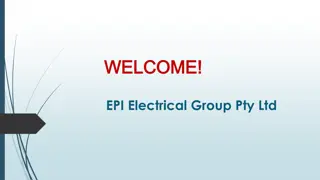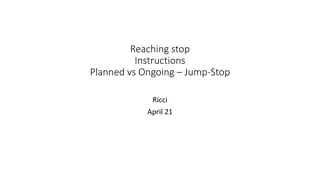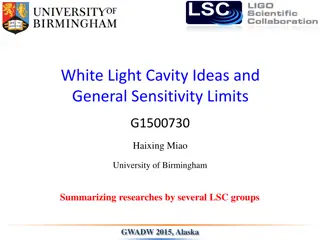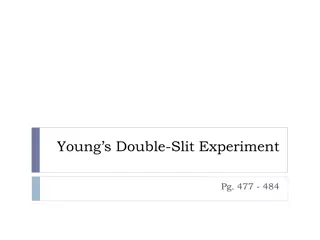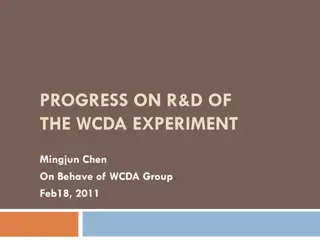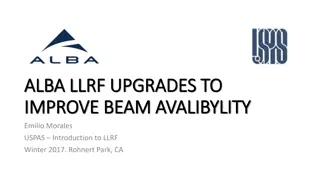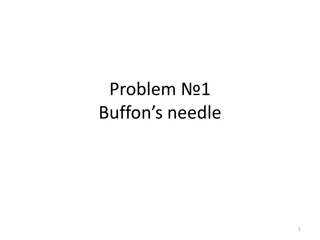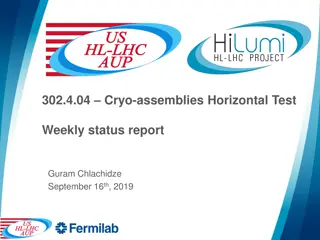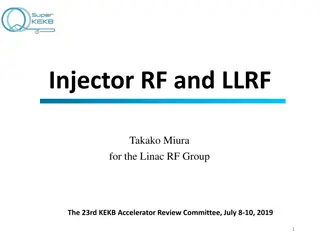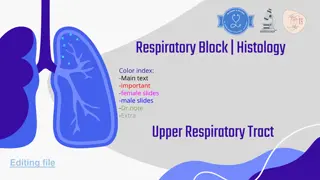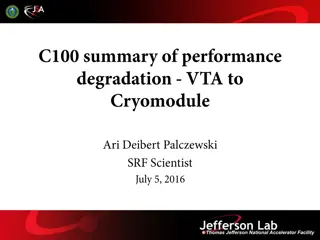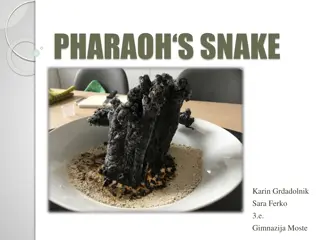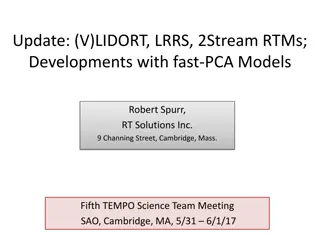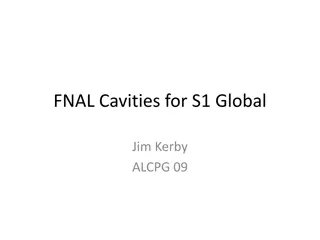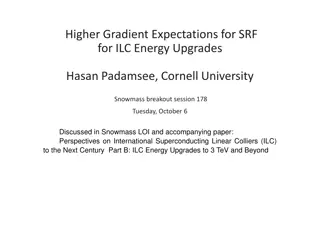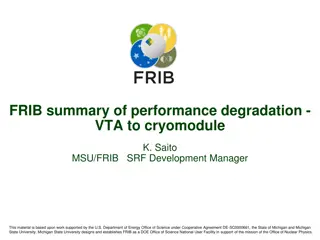Key Upgrades for Cavity 1D in ADMX Experiment
The ADMX experiment at LLNL is undergoing key upgrades for Cavity 1D to enhance axion-to-photon conversion power. The upgrades aim to optimize frequency coverage, form-factor, and Q-factor, with a focus on improving physical and noise temperature. Replacing stainless steel with carbon fiber support struts and minimizing noise temperature are crucial aspects of the upgrade plan. Additionally, the interfaces of Cavity 1D are being revamped with new gearboxes for improved functionality. These upgrades are vital for achieving higher performance and efficiency in the experiment.
Download Presentation

Please find below an Image/Link to download the presentation.
The content on the website is provided AS IS for your information and personal use only. It may not be sold, licensed, or shared on other websites without obtaining consent from the author.If you encounter any issues during the download, it is possible that the publisher has removed the file from their server.
You are allowed to download the files provided on this website for personal or commercial use, subject to the condition that they are used lawfully. All files are the property of their respective owners.
The content on the website is provided AS IS for your information and personal use only. It may not be sold, licensed, or shared on other websites without obtaining consent from the author.
E N D
Presentation Transcript
ADMX Run 1D Cavity System Gianpaolo Carosi Nov 17th, 2020 LLNL-PRES-XXXXXX This work was performed under the auspices of the U.S. Department of Energy by Lawrence Livermore National Laboratory under contract DE-AC52-07NA27344. Lawrence Livermore National Security, LLC
Key Microwave Cavity Design Constraints Maximize product of B2 V QL Clmnto maximize axion-to-photon conversion power B2V set by the magnet bore: (8T)2 (~100 liters) Loaded Quality factor QL= frequency/bandwidth (QL ~ 105 for copper cavity ~1 GHz) TM010 mode C010 ~ 0.69 TM011 mode C011 ~ 0.0 Mode Form Factor Clmn Tunability: must be able to shift resonant frequency over an appreciable range (typically 30-50%) Ability to determine that you are on the mode that couples to axions (TM0n0) Precision & alignment tolerances (minimize spurious modes and mode crossings) B-field 2 LLNL-PRES-xxxxxx
Run 1A-1C (two tuning rods), Run 1D (one rod), Run 2A-2B (4-cavity) Current run 1C has two 4.5 OD tuning rods. Two rods any larger only give marginal increase in frequency. Also create split modes with zero form-factor very close (and sometimes below) the main TM010 mode. To reach ~1.4 GHz simpler to go to a single rod configuration. 3 LLNL-PRES-xxxxxx
Run 1C has been operating while construction & testing of 1D & 2A/B Want 1D ready by May, 2021 We are here! 4 LLNL-PRES-xxxxxx
Cavity 1D Frequency coverage & form-factor Surface to volume & frequency imply Q ~ 2/3 current system Qcrit ~ 53,000 Form factor degraded (mode pushed to one side) FF ~ 0.35 (vs current 0.45) Run time much longer ~ 383 days Critical to get the physical + noise temperature as low as possible. Key upgrade is replacing stainless steel support struts with carbon fiber Drop cavity from 120 to < 100 mk 5 LLNL-PRES-xxxxxx
Cavity 1D Interfaces New gearbox Moved axle Remove 1 rotor and move linear to 2nd rotor position 6 LLNL-PRES-xxxxxx
Cavity 1D Interfaces New Gearbox is an extension of current system Uses the same hole pattern that already exists for rod1 gearbox but moves turret over. Two linear gearboxes 1. Main Antenna (same as current system) 2. Tuning Vernier where 2nd rotary gearbox is (potential to push around mode-crossings) Changes needed: Need to adjust the position of the wiring break out box on the cavity and the position of some of the attenuators. Additional change will be larger thermal interface for the sapphire (still being adjusted) This could use some thermal modeling! 7 LLNL-PRES-xxxxxx
Upgrade the thermal sink for the tuning rod with new caps We would like to model this but would also be good to verify at dil fridge temperatures Make small mechanical mockup of turret and place temp sensor on gold clamp & bottom of sapphire piece Time constants should be ~ hours but good to verify 8 LLNL-PRES-xxxxxx
Cavity 1D Construction Run 1D Tuning Rod and new cavity endcaps in procurement (Meyer Tool). Tuning rod long lead time item (16 weeks). Order was delayed in getting placed but the rod and endcaps shipped and look like they will arrive this week. Cavity 1D tuning rod and endcaps at Meyer Tool 8.060 OD Bottom cavity endcap being faced Upper cavity endcap being inspected 9 LLNL-PRES-xxxxxx
Cavity 1D New Cavity Exterior Shell New exterior system would allow us to completely test the assembly and motion control ahead of assembly. Subcontractor that rolled main tube report initial test was out of round by 0.045 . Requested that they redo it (< 0.030 tolerance) Delay means main cavity tube will probably be here by end of December. Initial test assembly and plating expected by end of Feb followed by full system testing (mode maps) Aim for delivery in May, 2021. 10 LLNL-PRES-xxxxxx






